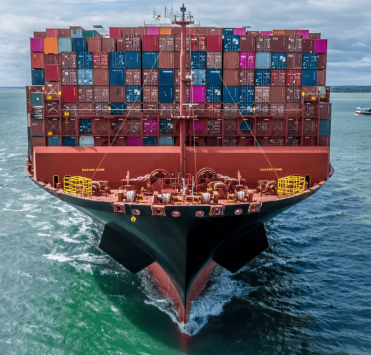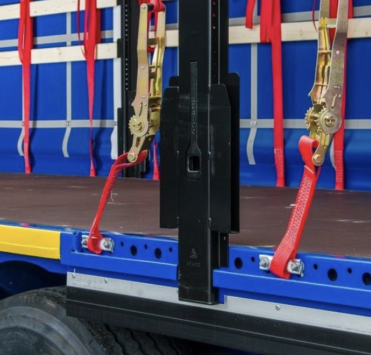RMPD for transportation through Poland: What is it, why and how to apply correctly?

From November 1, 2024, the Polish government will implement a mandatory requirement for all foreign vehicles crossing the Polish border to submit an RMPD (Remote Monitoring and Positioning Declaration) application. According to the new regulations, the RMPD application is mandatory for all vehicles with a payload capacity of 3.5 tons or more. This means that every vehicle meeting this requirement and crossing the Polish border must submit geolocation data, regardless of whether it is loaded or traveling empty. Vehicles subject to these requirements include medium and large trucks commonly used for commercial transportation in international logistics.
According to the new regulations, starting from November 1, 2024, carriers not registered in EU countries, Switzerland, or the EFTA are required to register their freight transport operations by road. From January 1, 2025, this requirement will also apply to carriers from other EU countries, Switzerland, and EFTA. This pertains to companies performing road transport operations within Poland to or from non-EU countries based on the appropriate permits provided by international treaties binding Poland and those countries.
What is RMPD?
RMPD is a monitoring system that allows for tracking the geolocation of vehicles operating within Poland. All foreign carriers whose vehicles transit through Poland, enter with cargo, or return empty are now required to transmit their location data.
This system enables real-time monitoring of vehicle movements, contributing to the reduction of smuggling, improving tax compliance oversight, and increasing the transparency of logistics processes in the country.
Why is RMPD needed, and who requires it?
RMPD is aimed at strengthening Poland's economic security. Monitoring all types of transportation, including transit and empty trips, allows Polish authorities to have a comprehensive view of vehicle and cargo movements across its territory. This information is also crucial for analyzing goods flows, enhancing tax oversight, and identifying potential risks associated with the illegal movement of cargo.
Example of a situation where RMPD is required:
- Transit transport: A Ukrainian logistics company is transporting goods from Germany to Ukraine, transiting through Poland. The driver must submit an RMPD application before entering Poland, even if the cargo is just part of a larger shipment.
- Empty trip: After delivering goods to Ukraine, the carrier returns with an empty truck. Despite the lack of cargo, they must submit an RMPD application to comply with the requirements.
This mandatory condition applies to all vehicles, regardless of the presence of cargo, making the new regulations stricter compared to the SENT system.
SENT and RMPD: What’s the Difference?
The SENT system remains in effect but has clear distinctions from RMPD. While SENT is applied only to specific types of goods defined as "sensitive" (alcohol, tobacco products, energy resources, etc.) and requires data submission for such cargo, RMPD covers all transports—both loaded and empty.
As an example for better understanding:
SENT: A Ukrainian carrier transports a batch of sunflower oil (in bulk) from Ukraine to Poland. Therefore, the carrier must submit a SENT application for inspection, as the product falls under the sensitive category. Detailed information about the product is provided here.
RMPD: The same driver, after unloading in Poland, goes to pick up a cargo in Germany. Now the transport company must submit an RMPD application, even though there is no cargo, as the inspection falls under the new requirements for all vehicles.
Registration of International Road Transport (RMPD)
Three special forms have been created on the PUESC platform at https://puesc.gov.pl/ in the "Forms" section:
- RMPD100 – Notification of transport by the carrier (Zgłoszenie przewozu przez przewoźnika)
- RMPD – Update (Aktualizacja)
- RMPD406 – Driver's check of declaration status (czy zgłoszenie zostało dokonane i jest aktualne) / Whether the declaration was submitted and if it is current.
How does RMPD work and what data needs to be provided?
To submit an RMPD application, the carrier must fill out an online form in the Polish customs system. The form includes:
- Vehicle data (license plate, make, type)
- Driver information (name, contact details)
- Point of entry into Poland and route to the exit point
- Cargo data (if any) or note regarding an empty trip
- Access to GPS data for continuous location updates.
Geolocation data must be provided to customs authorities regularly throughout the vehicle's stay in Poland. In case of violations or failure to provide data on time, the carrier may be fined.
How to Avoid Mistakes When Submitting RMPD?
To avoid delays, fines, and violations, it is important to follow these recommendations:
- Plan routes in advance and ensure that all vehicles are equipped with GPS.
- Submit applications early, especially when crossing the border with an empty cargo area, as such cases often lead to misunderstandings.
- Check for the availability of all documents and the accuracy of the form. Incorrect or incomplete information may lead to delays.









